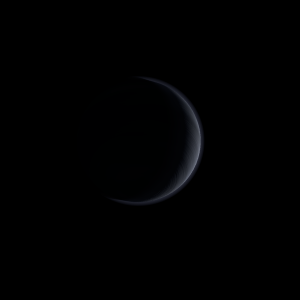|
|
Space Astro
|
Info for exoplanet "Hyoo"
| Scientific (actual) data |
|---|
| Name | HD 108147 b |
| Planet status | Confirmed |
| Mass sini | 0.261 |
| Orbital period | 10.8985 |
| Semi major axis | 0.102 |
| Orbit eccentricity | 0.53 |
| Angular distance | 0.002645 |
| Discovered | 2002 |
| Updated | 2016-01-15 |
| Omega | 308 |
| Tperi | 2450830 |
| Publication | Published in a refereed paper |
| Detection type | Radial Velocity |
| Star name | HD 108147 |
| Right ascension | 186.44° |
| Declination | -64.02° |
| Mag v | 6.99 |
| Star distance | 38.57 |
| Star metallicity | 0.18 |
| Star mass | 1.19 |
| Star radius | 1.22 |
| Star sp type | F8/G0 V |
| Star age | 1.98 |
| Star temperature | 6067 |
| Wikipedia article | HD 108147 b |
Back
| |
| Fictional info (?) |
|---|
| Suggested name | Hyoo |
| Planet type | Warm planet |
| Its orbital period around HD 108147 of 11 earth days is the shortest of all the planets in its solar system.
As seen relative to the fixed stars, it rotates on its axis exactly four times for every four revolutions it makes around HD 108147.
Having almost no atmosphere to retain heat, it has surface temperatures that vary diurnally more than on any other planet in its solar system, ranging from 120°K (-153°C) at night to 420°K (147°C) during the day across the equatorial regions. |
| Atmosphere | Molecular hydrogen | 40% |
| Hydrogen chloride | 37% |
| Xenon | 15% |
| Hydrogen deuteride (HD) | 7.5% |
| Atmospheric pressure | 2.2 bar |
 |
| No known satellites |
| Google search for Hyoo |
|
Website by Joachim Michaelis
|
|
|
|